-
 bitcoin
bitcoin $124586.364639 USD
0.62% -
 ethereum
ethereum $4670.671710 USD
3.33% -
 xrp
xrp $2.983701 USD
0.18% -
 tether
tether $1.000175 USD
-0.03% -
 bnb
bnb $1209.430642 USD
2.76% -
 solana
solana $231.365861 USD
0.51% -
 usd-coin
usd-coin $0.999665 USD
-0.02% -
 dogecoin
dogecoin $0.264657 USD
4.46% -
 tron
tron $0.346415 USD
1.60% -
 cardano
cardano $0.871586 USD
3.70% -
 chainlink
chainlink $23.451270 USD
7.56% -
 hyperliquid
hyperliquid $46.860071 USD
-2.96% -
 ethena-usde
ethena-usde $1.000120 USD
0.04% -
 sui
sui $3.611279 USD
1.08% -
 stellar
stellar $0.407149 USD
0.96%
How to avoid EMA fraudulent line signals?
To avoid fraudulent EMA signals in crypto trading, use multiple timeframes, combine with other indicators like RSI and MACD, and backtest your strategy regularly.
May 22, 2025 at 08:42 am
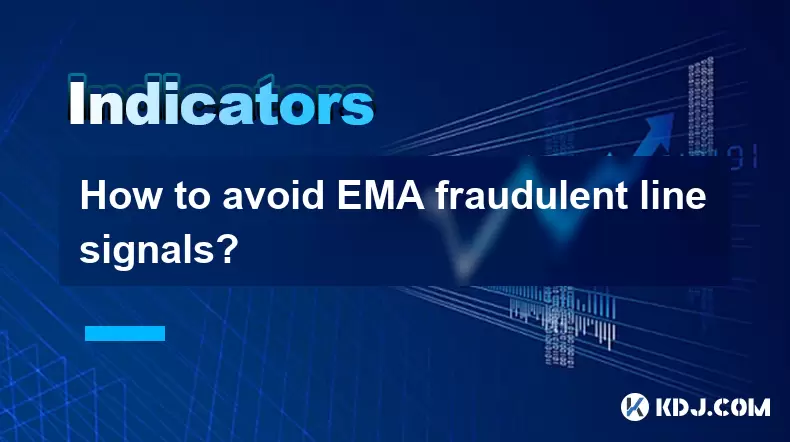
In the world of cryptocurrency trading, the Exponential Moving Average (EMA) is a popular technical indicator used to identify trends and potential entry or exit points. However, traders often encounter fraudulent EMA line signals that can lead to significant financial losses. This article will explore strategies to help you avoid falling victim to these misleading signals and make more informed trading decisions.
Understanding EMA and Its Importance in Trading
The Exponential Moving Average (EMA) is a type of moving average that places a greater weight and significance on the most recent data points. This makes it more responsive to new information compared to the Simple Moving Average (SMA). Traders use EMAs to smooth out price data and identify trends over time. For example, a 50-day EMA is commonly used to assess short-term trends, while a 200-day EMA is used for long-term trends.
Understanding the mechanics of EMAs is crucial because fraudulent signals often arise from misinterpretations or manipulations of these indicators. By grasping the basics, you can better recognize when a signal might be misleading.
Identifying Common Types of Fraudulent EMA Signals
Fraudulent EMA signals can manifest in several ways, often leading traders to make poor trading decisions. Some common types include:
- False Breakouts: These occur when the price briefly breaks through an EMA line but quickly reverses, trapping traders who entered positions based on the breakout.
- Whipsaws: These are characterized by rapid and frequent price movements that cross the EMA line, causing traders to enter and exit positions prematurely.
- Manipulated Data: In some cases, market manipulators might artificially influence price data to create deceptive EMA signals.
Recognizing these patterns is the first step in avoiding fraudulent signals. By being aware of these common issues, you can develop strategies to mitigate their impact on your trading.
Strategies to Verify EMA Signals
To avoid falling for fraudulent EMA signals, you need to implement robust verification strategies. Here are some effective methods:
- Use Multiple Timeframes: Analyzing the same EMA on different timeframes can provide a more comprehensive view. For example, if a bullish signal appears on a daily chart, confirming it on a weekly chart can increase its reliability.
- Combine with Other Indicators: Using additional technical indicators like the Relative Strength Index (RSI) or Moving Average Convergence Divergence (MACD) can help confirm or refute EMA signals. For instance, if an EMA crossover suggests a buy, but the RSI indicates overbought conditions, it might be a false signal.
- Backtesting: Testing your EMA strategy on historical data can help you understand its effectiveness and identify potential pitfalls. This involves applying your strategy to past price data to see how it would have performed.
By integrating these verification methods, you can enhance your ability to distinguish between genuine and fraudulent EMA signals.
Practical Steps to Implement EMA Verification
Implementing the strategies mentioned above requires a systematic approach. Here are detailed steps to help you verify EMA signals effectively:
- Select Your EMA Periods: Decide on the EMA periods that align with your trading strategy. Common periods include the 50-day and 200-day EMAs for short and long-term trends, respectively.
- Set Up Your Trading Platform: Ensure your trading platform supports multiple timeframes and the necessary technical indicators. Most platforms allow you to add EMAs, RSI, and MACD to your charts.
- Analyze Multiple Timeframes: Open charts for different timeframes (e.g., daily, weekly, and monthly) and plot the same EMA on each. Look for consistency in the signals across these timeframes.
- Apply Additional Indicators: Add RSI and MACD to your charts. Observe how these indicators interact with the EMA signals. For instance, if the EMA suggests a buy, check if the RSI is below 70 (not overbought) and if the MACD histogram is positive.
- Backtest Your Strategy: Use historical data to test your EMA strategy. Most trading platforms offer backtesting tools where you can apply your strategy to past price movements and analyze its performance.
By following these steps, you can systematically verify EMA signals and reduce the risk of falling for fraudulent ones.
The Role of Market Context in EMA Signal Verification
Understanding the broader market context is essential for verifying EMA signals. Factors such as overall market sentiment, major news events, and economic indicators can significantly influence price movements and, consequently, EMA signals.
- Market Sentiment: If the market sentiment is overwhelmingly bullish or bearish, it can lead to false EMA signals. For instance, during a bullish market, a temporary dip below an EMA might not indicate a trend reversal but rather a brief correction.
- News Events: Major news, such as regulatory changes or significant announcements from major cryptocurrencies, can cause sudden price spikes or drops, leading to misleading EMA signals. Keeping an eye on news feeds and understanding their potential impact can help you interpret EMA signals more accurately.
- Economic Indicators: Economic reports like inflation rates or employment data can affect cryptocurrency prices. If an EMA signal coincides with the release of such data, it's crucial to consider the potential influence of these indicators on the signal's reliability.
By integrating market context into your analysis, you can better assess the validity of EMA signals and avoid those that might be fraudulent.
Common Mistakes to Avoid When Using EMAs
Even with robust verification strategies, traders can still fall prey to fraudulent EMA signals if they make common mistakes. Here are some pitfalls to watch out for:
- Overreliance on a Single Indicator: Relying solely on EMAs without considering other indicators can lead to false signals. Always use a combination of tools for a more comprehensive analysis.
- Ignoring Market Volatility: High volatility can cause frequent EMA crossovers, increasing the likelihood of false signals. Adjust your strategy to account for current market conditions.
- Failing to Update Strategies: Market dynamics change over time, and what worked in the past may not work in the future. Regularly review and adjust your EMA strategy to stay effective.
Avoiding these mistakes can significantly enhance your ability to differentiate between genuine and fraudulent EMA signals.
Frequently Asked Questions
Q: Can fraudulent EMA signals be completely eliminated?A: While it's impossible to eliminate fraudulent signals entirely, implementing the verification strategies discussed in this article can significantly reduce their impact on your trading decisions.
Q: How often should I backtest my EMA strategy?A: It's recommended to backtest your EMA strategy periodically, especially when market conditions change or after significant updates to your trading approach. Monthly or quarterly reviews are common practices among experienced traders.
Q: Are there any specific EMA periods that are less susceptible to fraudulent signals?A: No specific EMA periods are inherently less susceptible to fraudulent signals. The effectiveness of an EMA period depends on your trading strategy and the market conditions. Using multiple EMAs and verifying signals with other indicators can help mitigate the risk of fraud.
Q: How can I stay updated on market sentiment and news events to better interpret EMA signals?A: Staying updated involves regularly checking cryptocurrency news websites, following influential figures on social media, and using trading platforms that offer real-time news feeds. Integrating these sources into your daily routine can help you better understand market dynamics and interpret EMA signals more accurately.
Disclaimer:info@kdj.com
The information provided is not trading advice. kdj.com does not assume any responsibility for any investments made based on the information provided in this article. Cryptocurrencies are highly volatile and it is highly recommended that you invest with caution after thorough research!
If you believe that the content used on this website infringes your copyright, please contact us immediately (info@kdj.com) and we will delete it promptly.
- BlockDAG, DOGE, HYPE Sponsorship: Crypto Trends Shaping 2025
- 2025-10-01 00:25:13
- Deutsche Börse and Circle: A StableCoin Adoption Powerhouse in Europe
- 2025-10-01 00:25:13
- BlockDAG's Presale Buzz: Is It the Crypto to Watch in October 2025?
- 2025-10-01 00:30:13
- Bitcoin, Crypto, and IQ: When Genius Meets Digital Gold?
- 2025-10-01 00:30:13
- Stablecoins, American Innovation, and Wallet Tokens: The Next Frontier
- 2025-10-01 00:35:12
- NBU, Coins, and Crypto in Ukraine: A New Yorker's Take
- 2025-10-01 00:45:14
Related knowledge
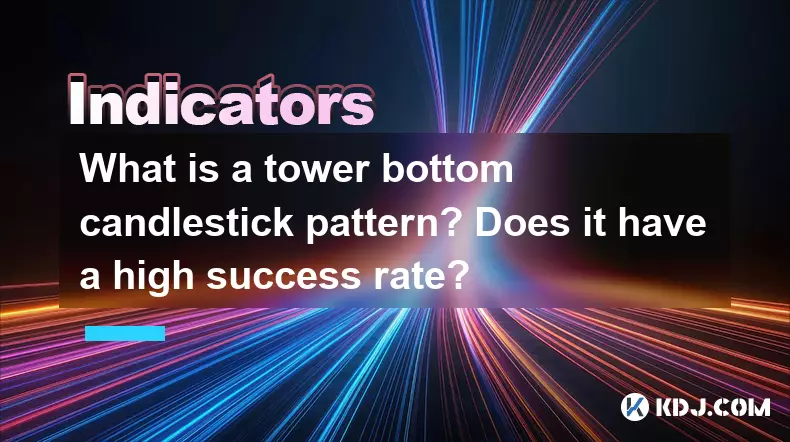
What is a tower bottom candlestick pattern? Does it have a high success rate?
Sep 22,2025 at 07:18am
Tower Bottom Candlestick Pattern Explained1. The tower bottom candlestick pattern is a reversal formation that typically appears at the end of a downt...
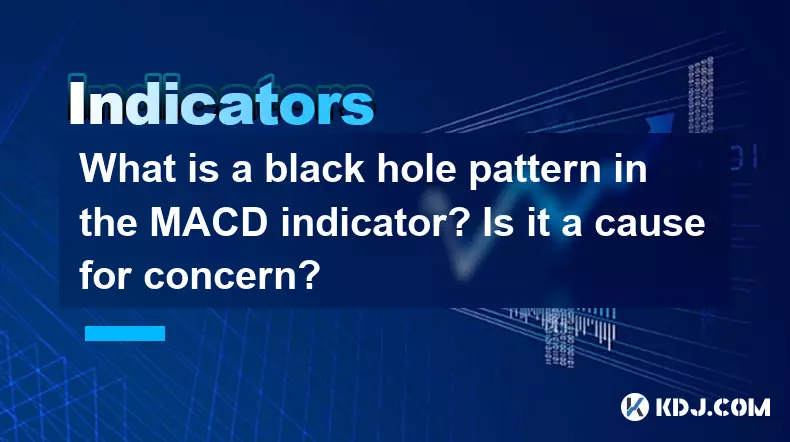
What is a black hole pattern in the MACD indicator? Is it a cause for concern?
Sep 21,2025 at 06:54pm
Bitcoin's Role in Decentralized Finance1. Bitcoin remains the cornerstone of decentralized finance, serving as a benchmark for value and security acro...

How can I use the psychological line (PSY) to determine market sentiment?
Sep 17,2025 at 02:19pm
Understanding the Psychological Line (PSY) in Cryptocurrency TradingThe Psychological Line, commonly referred to as PSY, is a momentum oscillator used...
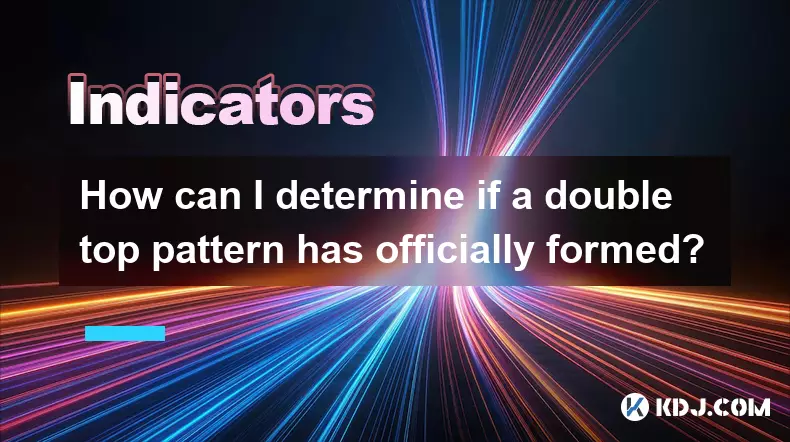
How can I determine if a double top pattern has officially formed?
Sep 21,2025 at 03:18am
Understanding the Structure of a Double Top Pattern1. A double top pattern consists of two distinct peaks that reach approximately the same price leve...
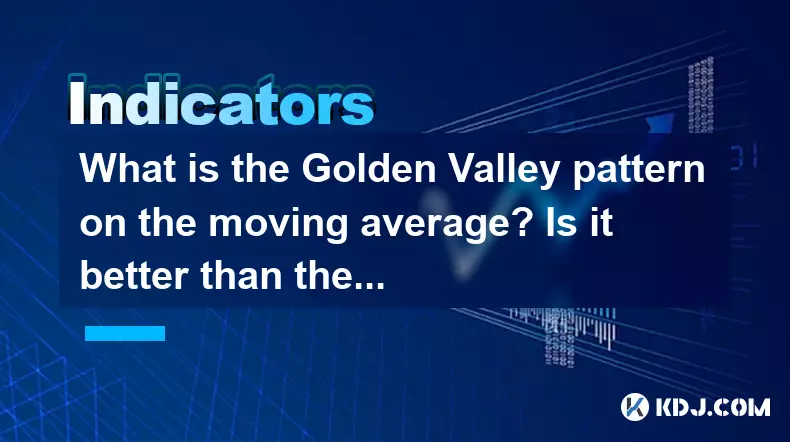
What is the Golden Valley pattern on the moving average? Is it better than the Silver Valley pattern?
Sep 21,2025 at 02:54pm
Understanding the Golden Valley Pattern in Moving Averages1. The Golden Valley pattern is a technical formation observed in cryptocurrency price chart...

What does a death cross of the RSI in the strong zone (above 50) mean?
Sep 17,2025 at 10:54pm
Understanding the Death Cross in RSI Context1. The term 'death cross' is traditionally associated with moving averages, where a short-term average cro...

What is a tower bottom candlestick pattern? Does it have a high success rate?
Sep 22,2025 at 07:18am
Tower Bottom Candlestick Pattern Explained1. The tower bottom candlestick pattern is a reversal formation that typically appears at the end of a downt...

What is a black hole pattern in the MACD indicator? Is it a cause for concern?
Sep 21,2025 at 06:54pm
Bitcoin's Role in Decentralized Finance1. Bitcoin remains the cornerstone of decentralized finance, serving as a benchmark for value and security acro...

How can I use the psychological line (PSY) to determine market sentiment?
Sep 17,2025 at 02:19pm
Understanding the Psychological Line (PSY) in Cryptocurrency TradingThe Psychological Line, commonly referred to as PSY, is a momentum oscillator used...

How can I determine if a double top pattern has officially formed?
Sep 21,2025 at 03:18am
Understanding the Structure of a Double Top Pattern1. A double top pattern consists of two distinct peaks that reach approximately the same price leve...

What is the Golden Valley pattern on the moving average? Is it better than the Silver Valley pattern?
Sep 21,2025 at 02:54pm
Understanding the Golden Valley Pattern in Moving Averages1. The Golden Valley pattern is a technical formation observed in cryptocurrency price chart...

What does a death cross of the RSI in the strong zone (above 50) mean?
Sep 17,2025 at 10:54pm
Understanding the Death Cross in RSI Context1. The term 'death cross' is traditionally associated with moving averages, where a short-term average cro...
See all articles










































































